Mazda’s “Sustainable Zoom-Zoom 2030” vision
Part 1: The well-to-wheel concept
Mazda announced its “Sustainable Zoom-Zoom 2030” long-term vision for technology development on August 8, 2017.
(Video: Briefing on Mazda’s Long-Term Vision for Technology Development https://youtu.be/-RN9WWtDgzQ)
We also revealed plans to start introducing next-generation technologies from 2019. These technologies, including Skyactiv-X, the world’s first commercial gasoline engine to use compression ignition,* are aimed at realizing the goals of the vision.
*As of August 2017, based on in-house research
This two-part series will provide an in-depth review of the “Sustainable Zoom-Zoom 2030” vision with a specific focus on Mazda’s approach to the problems facing the earth. In this first post, we will look back at the Zoom-Zoom brand message launched in 2002 and then explain the well-to-wheel approach to reducing carbon dioxide (CO2) emissions. We hope this story enhances your understanding of Mazda and our environmental strategy and helps to get you excited about our upcoming cars and technologies.
What does “Zoom-Zoom” really mean?
Let’s start with a look back at the history of “Zoom-Zoom” and the Mazda brand. In Japan, we began the first full-scale communications campaign that positioned “Zoom-Zoom” as our brand message more than 16 years ago, in April of 2002.
“Zoom-Zoom” is a phrase children use when imitating the sound of a car engine. Most children are fascinated by things that move. At Mazda, we never forgot that emotion for motion, and that’s why Driving Celebration is the essence of our brand.
News release: Mazda Goes 'Zoom-Zoom' with New Brand Message
http://www2.mazda.com/en/publicity/release/archive/2002/200204/0408e.html
“Sustainable Zoom-Zoom” long-term vision for technology development
Five years later, in March 2007, we announced our “Sustainable Zoom-Zoom” long-term vision for technology development. Aiming for a sustainable future that balanced environmental and transportation issues, this new technology plan set out to reconcile outstanding environmental and safety performance with the “Zoom-Zoom” driving pleasure Mazda had always pursued.
The technologies later become known as Skyactiv Technologies.
The result was Mazda’s current new-generation lineup, which has been highly acclaim around the globe.
News release: Mazda Sets Long-Term Vision for Technology Development: ‘Sustainable Zoom-Zoom’
http://www2.mazda.com/en/publicity/release/archive/2007/200703/070322a.html
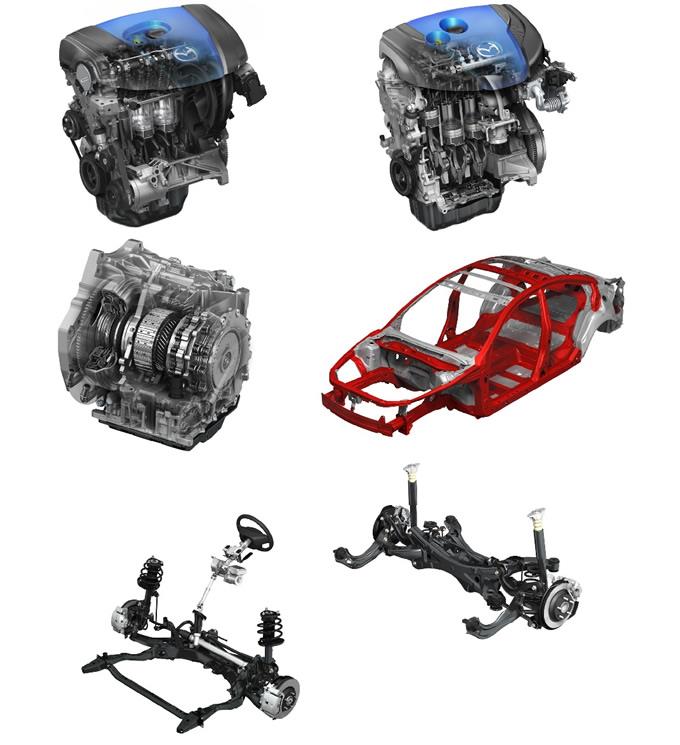
Towards “Sustainable Zoom-Zoom 2030”
Ten years after “Sustainable Zoom-Zoom,” we announced a new long-term vision for technology development that looks ahead to the year 2030, “Sustainable Zoom-Zoom 2030.”
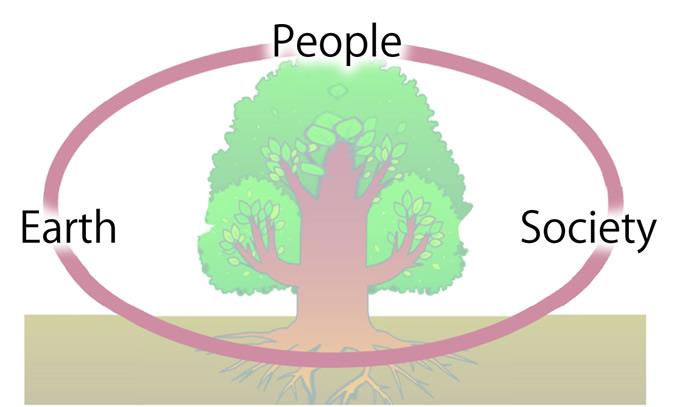
In light of the rapid changes taking place in the automotive industry, we wanted to take a longer-term perspective in setting out how Mazda would use driving pleasure, the fundamental appeal of the automobile, to help solve issues facing people, the earth and society. The new vision defines our mission as one of preserving the beauty of the earth while enriching individual lives and society as a whole, and commits Mazda to continue seeking ways to inspire people through the value found in cars.
News release: Mazda Announces Long-Term Vision for Technology Development, 'Sustainable Zoom-Zoom 2030'.
http://www2.mazda.com/en/publicity/release/2017/201708/170808a.html
Initiatives to help preserve the beauty of the earth
Like you, we love cars and value the joy of driving. So, what can we do together to ensure we can continue to co-exist with our beautiful earth? Mazda wants to contribute to the preservation of the environment by achieving a substantive reduction in our global CO2 emissions. The details of “Sustainable Zoom-Zoom 2030” are as follows:
Earth
Through conservation initiatives, create a sustainable future in which people and cars coexist with a bountiful, beautiful earth
Mazda’s approach
- Expand measures for reducing CO2 emissions from a well-to-wheel perspective, considering emissions over the vehicle's entire life cycle.
- Aim to reduce Mazda’s corporate average well-to-wheel CO2 emissions to 50 percent of 2010 levels by 2030, with an eye to achieving a 90-percent reduction by 2050.
- This goal will require a Multi-Solution approach that offers appropriate powertrains in consideration of each country or region’s energy policies and energy mix.
- Mazda’s policy is to maximize the effectiveness of fuel efficiency improvements and measures for cleaner emissions under real-world conditions.
In line with this policy, we will keep working to perfect the internal combustion engine, which is forecast to help power the majority of cars worldwide for many more years and can therefore make the greatest contribution to reducing CO2 emissions, and combine the results with effective electrification technologies.
From 2019, we will start introducing EVs and other electric drive technologies in regions with abundant clean energy or those that restrict automobiles to reduce air pollution.
What’s the well-to-wheel approach?
The well-to-wheel concept – encompassing everything from fuel extraction (well) through to driving (wheel) – is the key to understanding Mazda’s approach. If we really want to achieve substantive reductions in CO2 emissions, it is essential to consider emissions associated with energy extraction, refinement and transportation (Fig.1), not just those that occur after the tank has been filled (or the battery charged) and the vehicle is travelling on the road.
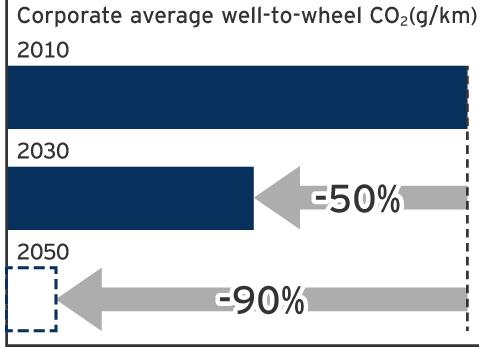
Fig.1
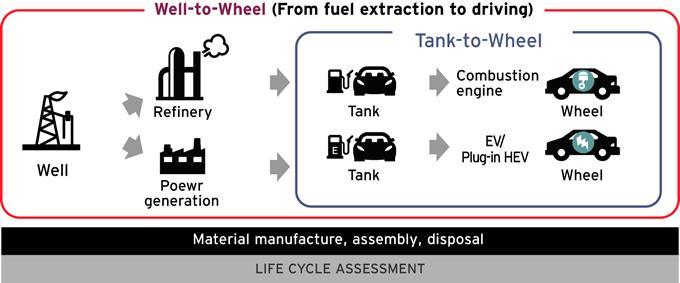
Let’s take electric vehicles (EVs) as an example. While they may not emit CO2 while driving, the process of generating power to charge the battery often does; how much depends on power generation method used (Fig.2). Now consider that, in many countries around the world, a high proportion of electricity is generated by thermal power plants. In Japan, coal, oil and natural gas (LNG) accounted for 83.3% of power generated in the fiscal year ended March 2016 (source: Federation of Electric Power Companies, FEPC INFOBASE 2016).
Fig.2 Comparison of CO2 emissions by power generation method
CO2 emissions by power generation method (per 1 kWh) in Japan
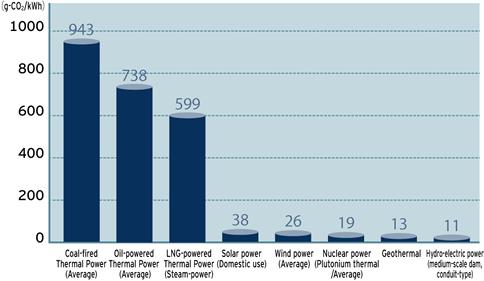
*In addition to the combustion of the fuel used to generate electricity, all energy expended at all stages, from the extraction of the fuel to the construction of the power generation facilities, transport, refining, operation, maintenance, etc. was included in the calculation of CO2 emissions.
Source: Comprehensive Evaluation of Life Cycle CO2 Emissions of Electric Power Generation Technologies in Japan, Central Research Institute of Electric Power Industry. Report No. Y06
How can we make a truly meaningful contribution to the environment? Mazda thinks it is essential to reduce well-to-wheel CO2 emissions over the car’s entire life cycle, not just while the car is driving on the road.
Next time, we will talk about the Multi-Solution concept behind Mazda’s next-generation technology introduction plan, including Skyactiv-X.
Video: Next-Generation Gasoline Engine Skyactiv-X: Technology Intro Film
https://www.youtube.com/watch?v=b7NaczesuE0
Video: Next-Generation Gasoline Engine Skyactiv-X: SPCCI
https://www.youtube.com/watch?v=RBlBrxT-Xy4
